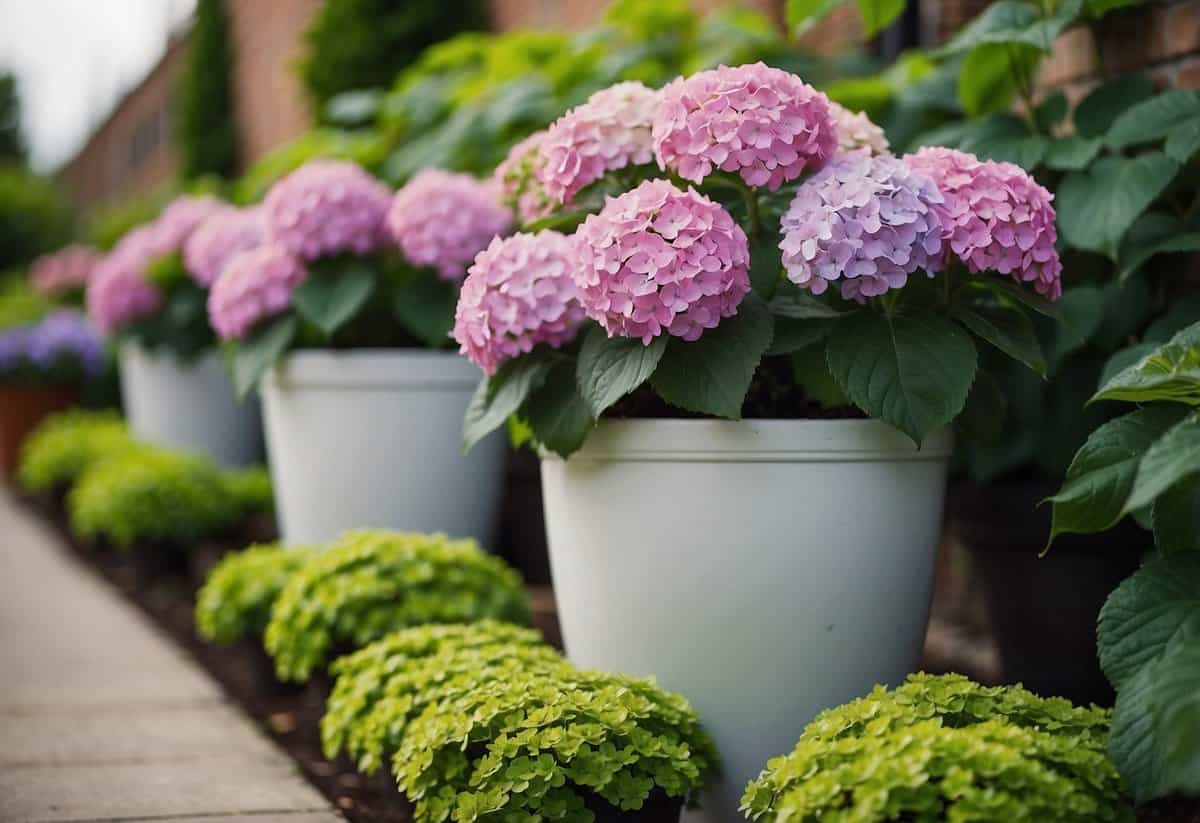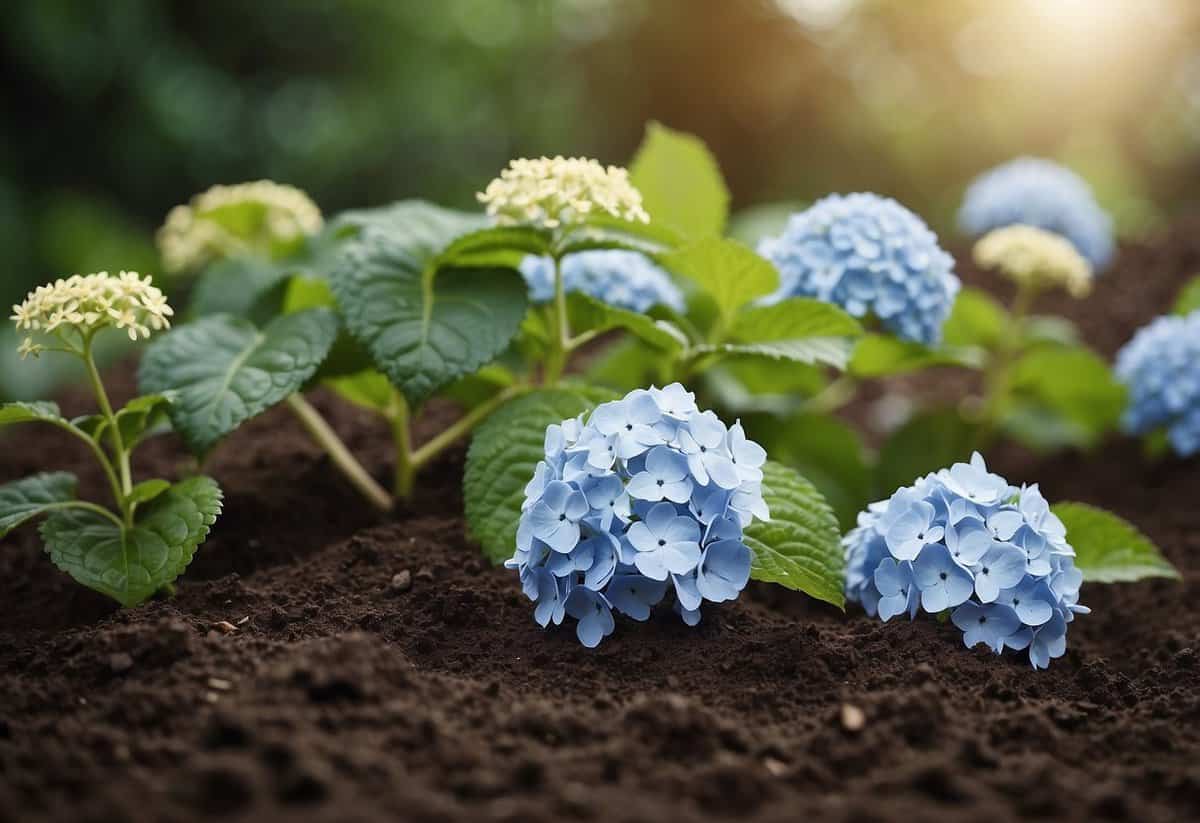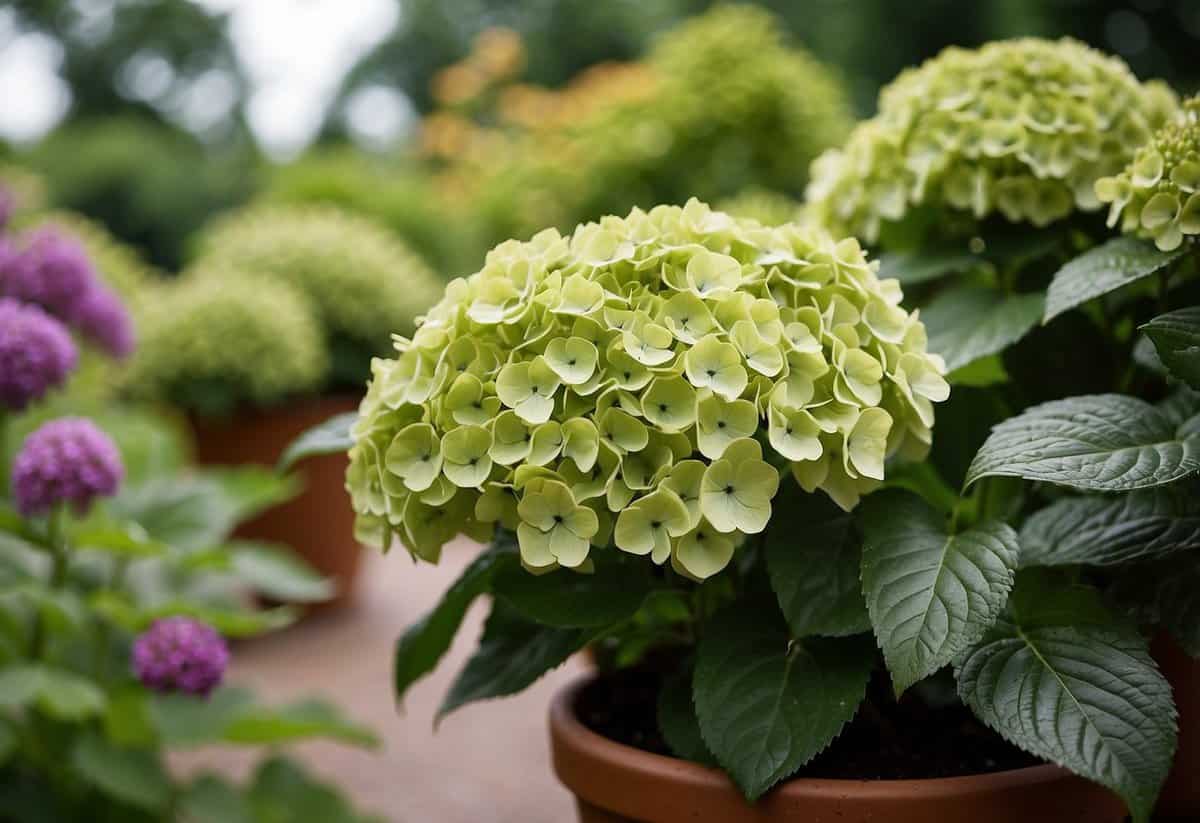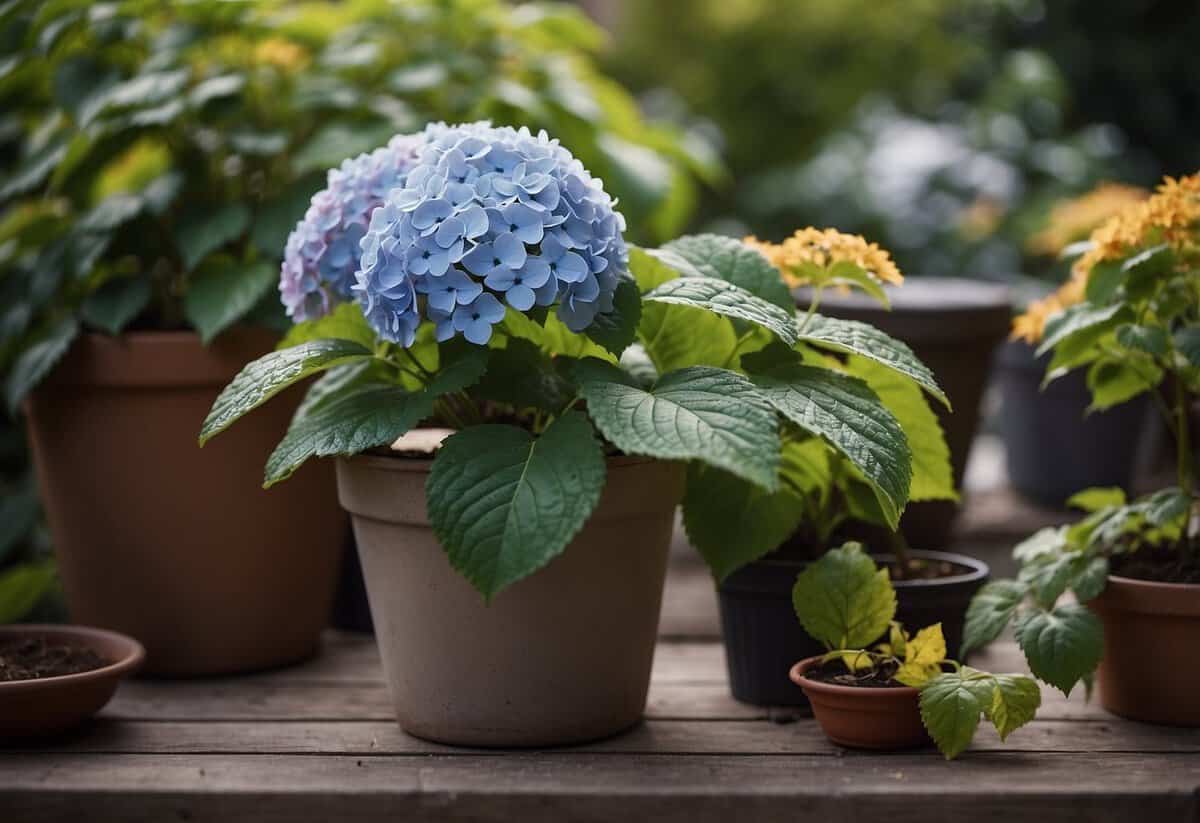Are Hydrangeas Better in Pots or Ground? Tips for Healthy Growth
Are you trying to decide whether to grow hydrangeas in pots or in the ground? Both options have their benefits, but hydrangeas thrive best in the ground if space allows. The large root system of hydrangeas can spread out more freely, allowing for healthier and more robust growth.

Growing hydrangeas in pots offers flexibility, making it easy to move them around to find the perfect spot for sunlight and shade. It’s an excellent choice if you’re dealing with limited garden space or poor soil conditions. Just ensure the pot is at least 24 inches wide and has good drainage to prevent root rot.
In the ground, hydrangeas benefit from the stable environment of natural soil, which provides consistent moisture and nutrients. This setup is ideal for creating a lasting landscape feature. If you choose to plant hydrangeas directly in your garden, remember to dig a wide planting hole to accommodate their extensive root system.
Hydrangea Basics

Hydrangeas are popular for their vibrant blooms and variety of types. This section will guide you through the essentials, including different varieties and the importance of matching your plant to your climate zone.
Understanding Hydrangeas
Hydrangeas are flowering plants adored for their large, colorful blooms. They are native to Asia and the Americas. These plants thrive in gardens and pots, given the right conditions. You need to provide moist, well-drained soil and adequate sunlight.
Watering is crucial. Hydrangeas generally require consistent moisture but should not sit in water.
oMaintain a balance between too wet and too dry. Pruning also helps maintain plant health and encourages growth. It’s best to prune after the blooming season.
Different Hydrangea Varieties
Hydrangea macrophylla: Known as bigleaf hydrangeas, these are the most common. They offer a range of colors including blue, pink, and purple.
Hydrangea paniculata: Panicle hydrangeas like the ‘Bobo’ variety are great for pots. They feature cone-shaped white flowers that gradually turn pink.
Hydrangea serrata: Mountain hydrangeas have smaller, delicate blooms and are ideal for cooler climates.
Hydrangea arborescens: Also called smooth hydrangeas, these are hardy and offer white dome-shaped flowers.
Hydrangea quercifolia: Oakleaf hydrangeas have distinctive lobed leaves and can tolerate drier conditions better than other types.
Knowing Your Growing Zone
Hydrangeas are sensitive to climate, so knowing your hardiness zone is crucial. The USDA Hardiness Zone map helps determine which types of hydrangea will thrive in your area.
For example, Hydrangea macrophylla thrives in zones 6-9, while Hydrangea arborescens can do well in zones 3-9.
By matching the right variety to your zone, you increase the chances of a thriving, blooming plant. If you live in a colder zone, consider planting in pots so you can move them indoors during harsh winters. Temperature and sunlight are key factors, so pay close attention to these when choosing your hydrangea.
Benefits of Potted Planting

Growing hydrangeas in pots offers great flexibility and control over their environment. You can easily move them to get the right amount of sunlight and shade, and you can also choose the perfect spot on your balcony, patio, or deck.
Advantages of Containers
Containers offer several benefits for hydrangeas. A major advantage is mobility. You can move the pots to protect the plants from extreme weather or to change their exposure to sunlight throughout the day. This is especially useful during hot summer afternoons.
Another benefit includes better control over soil quality. With containers, you can use high-quality potting soil mixed with compost or slow-release fertilizer. This ensures your hydrangeas get the right nutrients.
Also, pots can help with space management. If you have limited garden space, potted hydrangeas are perfect for adding beauty to small areas like a balcony, porch, or even a small corner of your garden.
Choosing the Right Pot
Choosing the right pot for your hydrangea is crucial. It’s best to use large pots with good drainage. Ensure the pots have drainage holes to prevent water stagnation, which can harm the roots. Terracotta pots are a great choice because they are sturdy and allow better air flow to the roots.
Material also matters. Terracotta, ceramic, or plastic pots each have their pros and cons. Terracotta looks classic and breathes well, but it can be heavy. Plastic is lighter but doesn’t allow as much air flow.
Size is also important. A larger pot gives the roots plenty of room to grow. Ideally, the pot should be big enough to allow 2-3 inches above the root ball for mulch.
Best Hydrangea Types for Pots
Certain hydrangea varieties are especially suited for container planting. Panicle hydrangeas are a great choice because they are compact and adapt well to pots. These typically need 4-6 hours of sun, but can handle some shade in the afternoon.
Bigleaf hydrangeas are another suitable variety. They are popular for their large, colorful blooms and thrive in pots with partial sun.
Oakleaf hydrangeas are also recommended. They have unique leaves and do well in containers.
When selecting a hydrangea for your pot, look for compact varieties that will not outgrow the container quickly. This makes maintenance easier and ensures your hydrangeas stay healthy and happy.
Planting Hydrangeas in the Ground

When you plant your hydrangeas in the ground, it’s important to focus on soil preparation and the benefits of ground planting. Careful preparation ensures a healthy growth environment for these beautiful flowering shrubs.
Soil Preparation and Planting
Start by choosing a location with well-draining soil. Hydrangeas don’t like “wet feet,” so make sure the area doesn’t collect water. You should dig a hole about twice as wide and deep as the root ball.
Check the soil pH before planting. Hydrangeas prefer slightly acidic soil, usually around 5.5 to 6.5. If your soil is too alkaline, you can amend it with sulfur or peat moss.
After placing the plant in the hole, fill it halfway with soil and water it thoroughly. This helps eliminate air pockets around the roots. Next, fill in the rest of the hole and press the soil down gently but firmly.
Add mulch around the base to retain moisture and control weed growth. Make sure the mulch is a couple of inches away from the stem to prevent rot.
Ground Planting Benefits
Planting hydrangeas in the ground comes with several benefits. Hydrangeas are perennials, meaning they come back every year. This makes them a lasting addition to your garden.
When planted in the ground, hydrangeas have more space to grow. This allows their roots to spread out and absorb nutrients more efficiently, which can lead to healthier plants and more abundant blooms.
Ground-planted hydrangeas generally require less frequent watering compared to those in pots. The soil retains moisture better, reducing the risk of the roots drying out.
Finally, hydrangeas in the ground can better withstand temperature fluctuations. The earth acts as an insulator, protecting the roots from extreme heat or cold.
By focusing on soil preparation and understanding the benefits, you can cultivate hydrangeas that thrive and add beauty to your garden.
For more details, you can check this easy step-by-step guide.
Caring for Your Hydrangeas

Caring for your hydrangeas requires attention to watering, sunlight, and nutrients. These key elements ensure that your plants thrive whether they are in pots or in the ground.
Watering and Moisture Levels
Hydrangeas need consistent watering to maintain their health. The soil should be kept moist but not waterlogged. Using a layer of mulch around the base can help retain moisture. When planting in pots, make sure the container has good drainage.
Water regularly, especially during dry periods. Avoid letting the soil dry out completely between waterings, as hydrangeas prefer a steady moisture level. If the top inch of soil feels dry, it’s time to water.
For potted hydrangeas, check the soil moisture daily, especially in hot weather. In the ground, they might require less frequent watering but still need regular checks.
Sunlight and Shade Requirements
Hydrangeas thrive in areas with adequate but not excessive sunlight. Ideally, they benefit from morning sun and afternoon shade. Full sun in the morning helps them bloom, but too much exposure to intense sun can scorch leaves and dry out the soil.
If you’re planting hydrangeas in pots, you have the advantage of moving them to find the best spot. In hotter regions, giving your plants afternoon shade is crucial.
In cooler climates, your hydrangeas can handle more sun exposure but still need some dappled shade. Observe your plant’s response to sun exposure to determine the best location.
Nutrients and Fertilizing
Hydrangeas grow best with nutrient-rich soil. A good potting mix combined with compost provides essential nutrients. In pots, use high-quality potting soil and consider a slow-release fertilizer to ensure constant nourishment throughout the growing season.
It’s recommended to fertilize your hydrangeas in early spring and again in mid-summer. Choose a fertilizer formulated for flowering plants, which supports blooms without excessive foliage growth.
Avoid over-fertilizing, as it can lead to lush leaves with fewer flowers. Regularly check the soil’s nutrient levels and adjust fertilization accordingly to keep your hydrangeas thriving.
Seasonal Care and Overwintering

Caring for hydrangeas involves regular pruning to promote health and ensuring they are protected during winter months. Seasonal tasks help keep your hydrangeas blooming beautifully year after year.
Pruning for Health and Bloom
Proper pruning is essential to maintain the health and bloom of your hydrangeas. Start by removing dead or damaged wood. This helps the plant focus its energy on producing healthy blooms.
Deadheading, or removing spent flowers, encourages new growth. This should be done throughout the growing season. Use sharp, clean garden shears to make clean cuts.
For hydrangeas in pots, pruning helps manage their size and shape, making them easier to handle. Trim back any overgrown branches to keep the plant balanced and healthy.
Hydrangeas benefit from pruning right after they bloom. This timing ensures that you don’t accidentally remove next year’s flower buds. Always prune in late summer or early fall, depending on your climate. Regular pruning keeps your hydrangeas vibrant and full of life.
Protecting Hydrangeas in Winter
Winter protection is crucial for hydrangeas, especially those in pots. Potted hydrangeas need extra care to survive cold temperatures. Move your pots to a sheltered spot, such as a garage or shed, to protect them from frost and harsh weather.
Add a thick layer of mulch around the base of your plants. This helps insulate the roots and retain moisture. You can use shredded leaves or bark mulch, piling it up to about 12 inches.
Consider wrapping the pots in burlap or bubble wrap for added insulation. This helps keep the roots warm and prevents the soil from freezing. Water your hydrangeas thoroughly before the first frost.
If you can’t move your pots, place them against a south-facing wall and cover with a weatherproof material like plastic. This provides some protection from the cold winds. Uncover your plants in the spring to allow them to wake up naturally as the weather warms.







